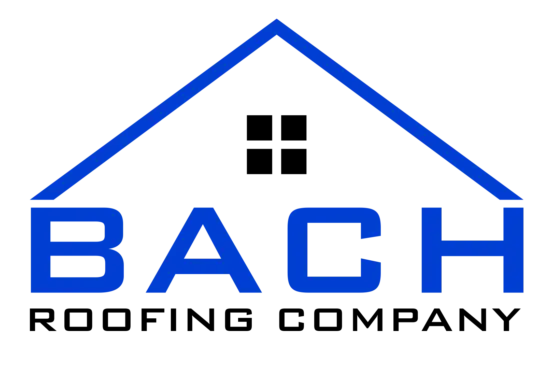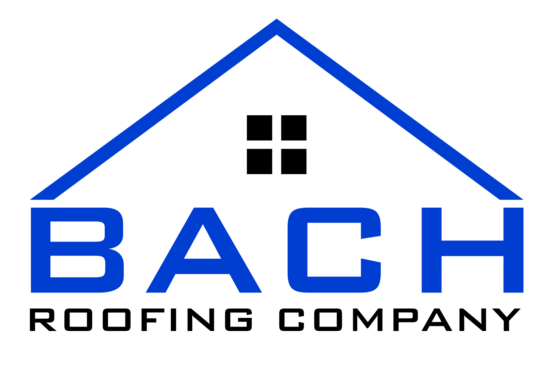Table of Contents
When your roof shows signs of failing, it’s important to act quickly. Wait too long to replace it, and you could find yourself dealing with leaks, structural damage, or skyrocketing repair bills. That said, timing your roof replacement right can save you money, support a better installation, and protect your home for years to come. The question is: when is the best time to do it?
The answer depends on more than just the weather. Contractor availability, material performance, and even your personal schedule all play a role. Each season has its pros and cons, and knowing what to expect can help you make the right decision. In this blog, the roofing specialists at Bach Roofing outline what you need to know when planning a replacement.
Signs That Your Roof Needs Replacing
A roof doesn’t fail overnight. Most of the time, it gives warning signs long before major damage occurs. If you’re wondering whether your roof is reaching the end of its lifespan, knowing what to look for can help you avoid bigger problems down the road.
Here are the most common signs that it’s time for a roof replacement.
- Missing or Damaged Shingles: If shingles are cracked, curling, or falling off, your roof is struggling to do its job. Shingles protect your home from rain, wind, and debris, but over time, they wear down. High winds, storms, and fluctuating temperatures can cause them to lift, crack, or even break apart. A few damaged shingles can often be replaced, but widespread deterioration means the roof is failing.
- Frequent Leaks or Water Stains: A small leak might seem like a minor issue, but it often signals a much bigger problem. Water stains on ceilings or walls mean moisture is getting through, and if left unchecked, that moisture can lead to mold, rot, or structural damage. If leaks are happening in multiple areas or keep coming back after repairs, your roof is no longer holding up.
- Granules in the Gutters: Shingle granules help protect your roof from UV rays and harsh weather. Over time, they wear off and wash into the gutters. If you notice dark, sand-like particles accumulating in your downspouts, your shingles are breaking down. Once they lose too many granules, they become less effective at repelling water, making your home vulnerable to leaks.
- Sagging Roofline: A roof should always have a straight, even structure. If you notice sagging, dipping, or uneven areas, it could mean the roof decking is weakening. This often happens due to trapped moisture or prolonged exposure to heavy snow and rain. A sagging roof is a structural problem that needs immediate attention.
- Rising Energy Bills: If your heating and cooling costs keep climbing, your roof might be part of the problem. A worn-out roof struggles to insulate your home, allowing heat to escape in the winter and hot air to seep in during the summer. If insulation and ventilation seem fine but energy costs keep rising, an aging roof could be to blame.
- Moss or Algae Growth: While moss and algae may seem like minor cosmetic issues, they can cause real damage. Moss traps moisture, which speeds up shingle deterioration. Algae growth, often seen as dark streaks, can weaken roofing materials over time. If moss or algae keeps returning, your roof may not be draining properly, and moisture damage could be setting in.
- Daylight in the Attic: Checking your attic is one of the easiest ways to spot roofing problems. If you see sunlight shining through the roof boards, that means there are gaps where water can get in. Small holes can quickly turn into major leaks, and if the attic has signs of moisture, such as damp insulation or musty odors, a roof replacement may be necessary.
- Your Roof is 20+ Years Old: Most asphalt shingle roofs last between 20 and 25 years. If yours is approaching or past that age, it’s time to start planning for a replacement. Even if there are no obvious signs of damage, materials degrade over time, making the roof less effective at protecting your home. If neighboring houses of a similar age are getting new roofs, that’s another clue that yours may be due.
If you suspect your roof is nearing the end of its lifespan, don’t wait for a major failure. A well-timed replacement protects your home, saves on energy costs, and gives you peace of mind before leaks and damage get worse.
Spring: A Great Time for Early Planning
Spring marks the start of roofing season for many contractors. As temperatures rise and winter storms fade, homeowners begin thinking about home improvements. If your roof has suffered damage from snow, ice, or wind, this is a good time to schedule an inspection and plan your replacement.
Mild weather makes spring an attractive choice for roof work. Shingles seal properly, adhesives cure well, and contractors can work efficiently without extreme heat or cold slowing them down. Plus, scheduling early in the season may help you avoid the summer rush when demand peaks.
However, spring weather can be unpredictable. Sudden rain showers and lingering cold snaps can cause delays. If you’re considering a spring roof replacement, flexibility is key. Checking the forecast and working with a contractor who can adjust as needed will help ensure a smooth process.
Summer: Peak Season for Roofing
Summer is the most popular time for roof replacements. Longer daylight hours allow crews to work more efficiently, and consistent warm weather helps materials set properly. If you want a quick, trouble-free installation, summer can be a great option, especially in the early to mid-season before temperatures peak.
However, summer heat can be a challenge. In Michigan, late summer temperatures can climb, making conditions tough for roofing crews. Excessive heat can also affect asphalt shingles, causing them to soften, making installation trickier. If you’re scheduling in the summer, aim for early morning or late afternoon work to avoid extreme heat.
Another factor to consider is demand. Because summer is peak roofing season, contractors book up fast. If you wait too long to schedule, you may face delays or higher pricing due to increased demand. Planning ahead and requesting a free quote sooner rather than later to secure your spot early can help you avoid these issues.
Fall: The Ideal Time for Many Homeowners
For many, fall is the best time to replace a roof. The combination of mild temperatures, lower humidity, and stable weather conditions creates optimal conditions for roofing projects. Shingles have plenty of time to stick before winter, and contractors typically experience fewer weather-related delays.
In Michigan, fall also means fewer extreme temperature swings. This helps prevent issues like thermal expansion, which can affect how materials settle and seal. Plus, getting a new roof before winter ensures your home is protected from heavy snow and ice.
The biggest downside to a fall roof replacement is contractor availability. Any jobs that can’t be completed in the summer get scheduled for the fall. If you wait until September or October to book, you may struggle to find an opening before winter. If fall is your preferred time, scheduling in advance is essential.
Winter: Possible, but Challenging
Winter isn’t the ideal season for a roof replacement, but that doesn’t mean it’s impossible. Advances in roofing techniques and materials allow for year-round installation, even in colder climates. In some cases, winter may even be a good choice, especially if you need an urgent replacement or want to take advantage of off-season pricing.
Cold temperatures can pose challenges. Shingles need warmth to seal properly, and extreme cold can make materials brittle. If the temperature drops too low, adhesives and sealants may not set correctly, leading to potential issues down the road. Snow and ice can also create hazardous working conditions, leading to delays or safety concerns.
However, winter has a few advantages. Contractors typically have more availability, meaning you may be able to get your project scheduled faster. Some companies also offer discounts during the slow season, making a winter replacement a budget-friendly option. If you’re considering a winter roof replacement, working with an experienced contractor who understands cold-weather installation techniques is important.
Other Factors That Impact the Best Timing for Your Roof Replacement
Beyond seasonal conditions, several other factors can influence when you should replace your roof.
- The Age and Condition of Your Roof: If your roof is nearing the end of its lifespan, waiting too long could lead to leaks, water damage, or structural issues. If you’re already dealing with curling shingles, missing tiles, or persistent leaks, replacing your roof sooner rather than later can prevent expensive repairs.
- Scheduling and Contractor Availability: Roofing companies have busy and slow seasons. Summer and fall book up fast, while winter and early spring tend to be slower. If you have a specific contractor you want to work with, reaching out early to secure a spot is a smart move.
- Your Budget: Roofing costs can fluctuate based on demand. Summer and early fall are peak seasons, so prices may be higher. If you’re looking for potential savings, booking in late winter or early spring (before the rush begins) may give you better pricing.
- Personal Convenience: Consider your own schedule. If you travel frequently or have major events planned, choosing a time that minimizes disruption to your daily life is important. Some homeowners prefer summer because of vacation flexibility, while others like fall to get the job done before winter hits.
So When Should You Replace Your Roof?
The best time to replace your roof depends on a mix of weather conditions, contractor availability, and your own needs. If you’re looking for the most reliable season, fall offers the best balance of good weather and contractor availability – if you book early. If you want faster scheduling and potential cost savings, late winter or early spring may be worth considering. If your roof is actively leaking or showing signs of failure, waiting for the perfect season isn’t always an option: immediate action is better than risking further damage.
Work With Metro Detroit’s Trusted Roofing Contractors
Timing your roof replacement correctly is important, but choosing the right contractor is just as critical. An experienced roofer knows how to work in different conditions and can help ensure a smooth installation no matter the season.
At Bach Roofing, we use expert craftsmanship and high-quality materials to help property owners across Metro Detroit replace their roofs. We offer both residential and commercial roof replacement services. Whether you need a spring, summer, fall, or even winter installation, our team can guide you through the best options for your home and budget. If you’re considering a roof replacement, there is no time like the present to start planning. Contact Bach Roofing today for a free inspection and estimate. Based in St. Clair Shores, we serve homeowners throughout Metro Detroit, including Grosse Pointe, Harrison Township, Chesterfield, New Baltimore, Macomb, Clinton Township, and Shelby Township. If you’re ready to get started, call 586-244-2086 or fill out an online contact form to request your free quote. Let’s find the perfect time to upgrade your roof and protect your home for years to come.


